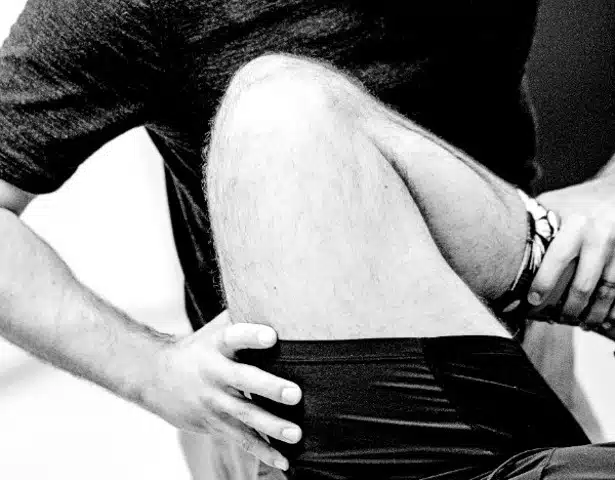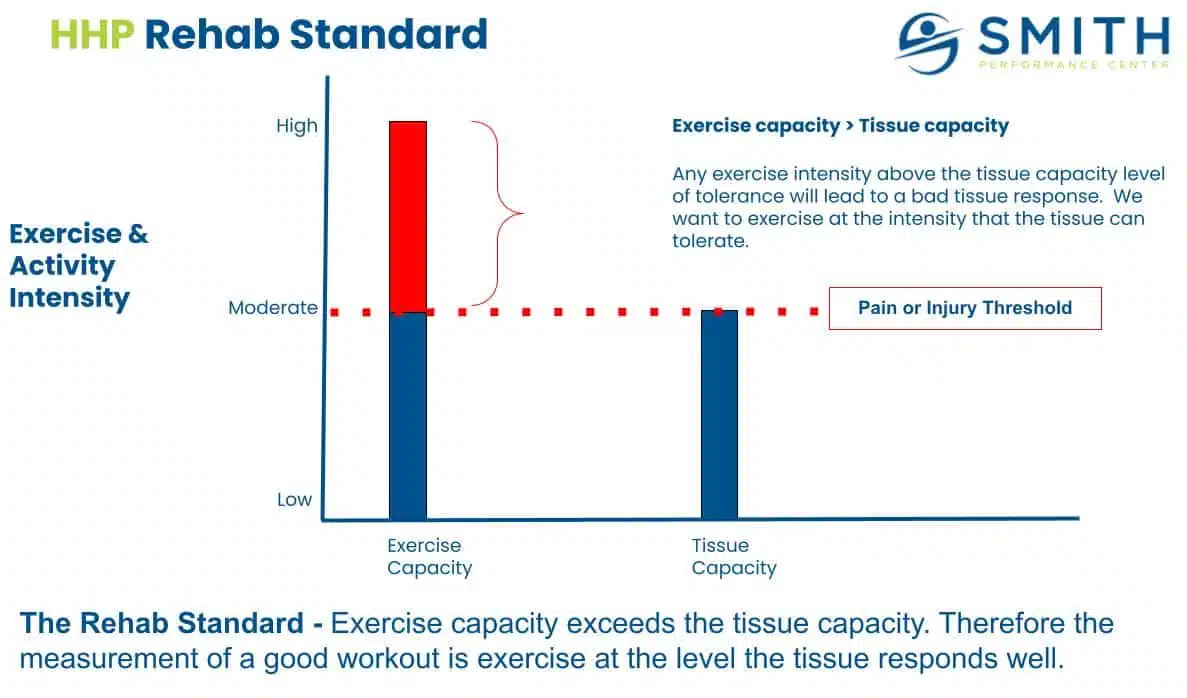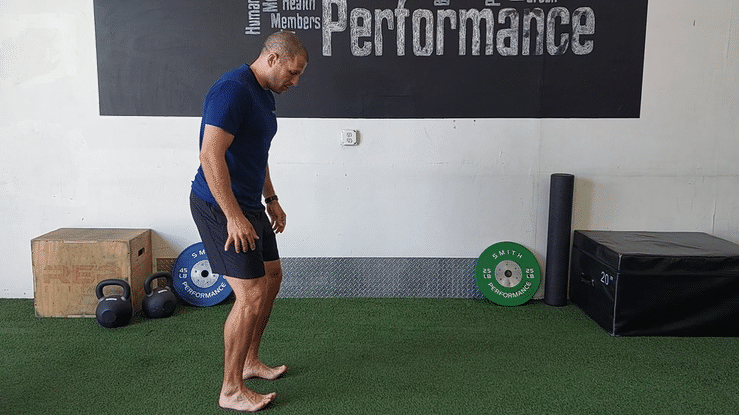What is the SERF Strap?
The SERF Strap is the first patellofemoral brace designed to treat PFP due to poor hip control. Basically, the strap is a really long elastic band that you anchor at the knee (my term is foundation 1), tension over the outside of the thigh, and anchor around the pelvis (foundation 2). When you create these anchor points, the strapped leg will now have support for external rotation at the hip joint. This reduces pelvic drop and knee valgus. You can take someone whose knees hit together and immediately correct this dysfunction. While the marketing material and websites talk just about patellofemoral pain, I use this tool for symptoms in the leg (sometimes the back) during the stance phase of running or walking. This includes injuries like posterior tibialis tendinopathy, adductor longus and gluteus medius injury, and trochanteric bursitis. For athletes, I prescribe it as an exercise training tool for runners, triathletes, or even team sports like basketball and soccer so running is no longer a trigger.
Unfortunately, the best brace for poor hip control is also the most difficult to put on despite the silly text you may see ‘easy re-application.’ This means patient compliance is horrible. The first few times of using it usually end in no support because the manufacturers’ instructions do not provide the key components of putting it on. I also see nasty rashes and cuts from misapplication. And no one is happy with a product that helps your patellofemoral pain but causes a skin injury that also keeps you from running and moving.
I like this brace and I honestly think it is underused by health professionals and active people who need a little help to get back to their active lifestyle.
When should you use the SERF Strap?
First things first, when applying our treatment hierarchy for painful lower extremity issues at our facility, the strap can identify poor hip control during the stance phase of walking and running gait.
Imagine a runner coming into the office with knee or medial ankle symptoms, both of which are common sites of pain that can be caused by poor proximal control leading to an overload of other force absorption structures. During the exam, we aim to figure out the painful tissue. Let’s say the pain generator is the patellar tendon (the large tendon that connects the patella to the lower leg bone called the tibia). We perform a local treatment to the tendon first then retest the painful activity like running or walking.
Our second step would be to figure out what is causing this tendon to be overloaded. We may test for hip strength with a side-lying resistive test or abnormal hip control during single leg step down. For hip strength, the first indication that there is poor proximal control is the apparent difference in hip strength. The injured side usually tests much weaker.
The step-down test is dynamic. We look for the pelvis dropping and the loaded leg collapsing inwardly (see the video below). These would all be evidence of pain stemming from abnormal hip control. We can apply the SERF Strap if there is a pain in this test with abnormal hip motion (which often happens) and often the issue is resolved. The final test is to have the patient perform the painful loading activity with the brace. We should see an 80 to 100% reduction in pain.
If you test this on yourself and find the issues listed above, then this tool could help you.
How do you put on the SERF Strap to control abnormal hip motion?
I breakdown the process into 3 phases:
-
- Foundation 1
- Tension
- Foundation 2
Foundation 1 is all about anchoring the strap over the knee. You want to make sure the knee does not have a friction point. You won’t notice it until the skin is wrecked.
The tension phase focuses on getting a good pull once Foundation 1 is set. This is the only place that will control abnormal hip motion. If you screw this part up, then the brace is useless as externally rotating the hip is caused by Foundation 1 being tensioned and stabilized at Foundation 2.
During Foundation 2, you anchor at the pelvis. Have someone do this for you the first time because you can lose the tension from the previous phase (See the video below for the whole process.)
Training tool with Patellofemoral Pain and Abnormal hip motion
There are two times I use the SERF Strap. The first is to confirm and support my plan of care if there is abnormal hip motion. As I said previously, patient compliance is terrible if you cannot put it on without help. So I practice with my patients over and over before they take it home. The ‘easy reapplication’ markers are basically useless so don’t worry about setting it up. The amount of tension you apply should change based on your discomfort and there is significant variability as you use it. It’s the first few weeks that this can be a game changer because the previously painful activity can be continued while doing the rehab.
If you are a runner, it is a great short-term solution for volume increases when breakdowns occur.
Questions?
If you have questions about this brace or anything orthopedic issues, email us at admin@smithperformancecenter.com.
If you are looking to buy a SERF Strap, you can find it HERE.
Other articles
Bracing, Taping, and Training Aids Page
Groin Brace – Adductor Brace
The Post Tib Brace
Modified Low Dye







